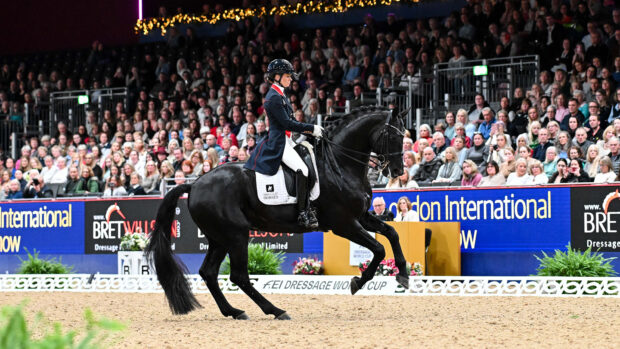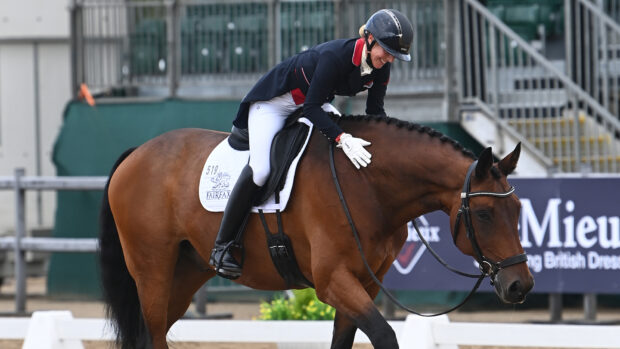Top British dressage rider and trainer, Carl Hester, reflects on the expenses involved in running international shows
LOTS of people go on about having more internationals at home – me included – and I thoroughly enjoyed the fabulous Wellington CDI, probably even more without riding. It was an opportunity really to look around and consider what goes into running an international, and to talk to show organiser David Sheerin, Wellington’s general manager, who was happy to share some figures with me.
Be prepared to have your eyes opened…
Four of the five international judges at Wellington will be officiating at the dressage World Championships in Herning, Denmark, this summer. They also judged some of the Premier League classes, presenting an amazing opportunity for those competitors. It was excellent value, but judges’ expenses comprised 20% of the cost of running the CDI.
Then there’s prize money. This is not set by the show, but by the FEI as a standard monetary amount, which worked out as 17% of the organising cost at Wellington CDI (it was 39% for the recent CSI2* showjumping international!). Anyone else thinking “wow”?
All the other officials required at an international, and the scoring, take up another 15% of the overall cost – which does not account for the time of the Wellington Riding staff.
Of course, the centre is extremely well equipped, with fabulous surfaces and facilities. Investment has been poured into the place, but the infrastructure needed for international shows – the marketing, accounting and, of course, the inevitable depreciation of surfaces and property – does not even come into these figures. That’s all extra.
Here are more of the essential costs involved in an international show, starting with the requisite extra equipment hire at 14% of the total. To ensure horses are secure overnight is 4%, to have a farrier there in case of that lost shoe emergency is 3%, the vet on hand is 7%, paramedics and ambulance is 13% (and you might not fall off, but a member of the audience might be taken ill), a commentator so everyone knows what’s going on is another 2%.
And the arena flowers? A bargain at 1% to give your horse something to spook at. For the bills that don’t have to be paid upfront, invoices must be paid at the end of the month.
Making it viable
MY point here is that international shows cost money. These figures add up, and do not include FEI fees. And while we, as riders, are in it to win or get a great rosette – another cost by the way – we’re also in it to get the best scores we can, and in doing so showcase our horses and put value on them should we put them on the market.
Welly Riding, as it is affectionately known, can put on international events in each of the Olympic disciplines because it’s established, and shows are only part of the business model.
It’s the lessons on much-loved hairy ponies, the clinics, the liveries, the British Horse Society training – just a few of the components that make it possible to have top-class facilities available for us to enjoy at international events. In other words, if David had to run Welly just as a show centre, it would not be viable.
I’m really grateful to David for sharing this information with me, so we can all take a deep breath and a reality check. David and his staff loved doing it all. It was the first time they’d had an international and Premier League run at the same time, simply because of dates, but it worked so well.
Is a £2,000 first prize – for the Nirvana Spa prix st georges freestyle at the Premier League – the highest for dressage in the country? I think it might be, and I recall Diana Barley and Nirvana Spa’s sponsorship when I first started competing at Wellington over 30 years ago. That’s amazing loyalty.
● Do you feel Britain should host more international dressage shows? Let us know your thoughts at hhletters@futurenet.com
- This exclusive column will also be available to read in Horse & Hound magazine, on sale Thursday 23 June
You may also be interested in…

Rising star Carl Hester once described as the “best-bred horse in the world” dies aged 11

Double personal best for Charlotte Dujardin’s top horse ahead of World Championship selection, as she compares him to Valegro

‘Tabloid criticism of Gemma Owen’s dressage career is cruel and unjustified’ says H&H’s dressage editor

Subscribe to Horse & Hound magazine today – and enjoy unlimited website access all year round
Horse & Hound magazine, out every Thursday, is packed with all the latest news and reports, as well as interviews, specials, nostalgia, vet and training advice. Find how you can enjoy the magazine delivered to your door every week, plus options to upgrade your subscription to access our online service that brings you breaking news and reports as well as other benefits.




